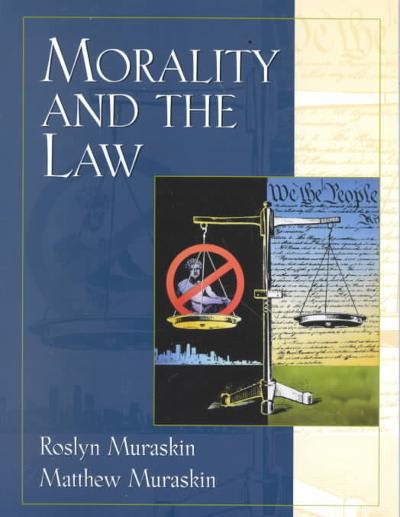Question
I need help to brief this case using the IRAC method: Ederer v. Gurksy Steven Gursky and Louis Ederer were law partners in a New
I need help to brief this case using the IRAC method:
Ederer v. Gurksy
Steven Gursky and Louis Ederer were law partners in a New York limited liability partnership, Gursky & Ederer LLP. In July2003, Ederer withdrew from the LLP because he had a severe falling out with Gursky and the LLP was cash-strapped andunprofitable. In December 2003, Ederer sued Gursky alleging Gursky breached the LLP agreement by failing to pay Edererhis 30 percent share of the LLP's profits and other compensation that Ederer earned during the last months of the LLP. Gurskydefended on several grounds, including that he, as a partner in an LLP, had no liability to Ederer because partnership law inNew York shielded partners in an LLP from any personal liability. The New York trial court held that New York law placinglimits on the personal liability of partners in an LLP applies to debts of the partnership or the partners to third parties and hasnothing to do with a partner's duties to his partner. On appeal, the Appellate Division affirmed, and Gursky sought review bythe New York Court of Appeals, the highest court in the State of New York.
Read, Judge
Partnership Law 26, as originally enacted, and its prototype,section 15 of the UPA, have always been understood to meanwhat they plainly say: general partners are jointly and severallyliable to nonpartner creditors for all wrongful acts and breachesof trust committed by their partners in carrying out the partnership's business, and jointly liable for all other debts to third parties. This proposition follows naturally from the very nature ofa partnership, which is based on the law of principal and agent.Just as a principal is liable for the acts of its agents, each partner is personally responsible for the acts of other partners in theordinary course of the partnership's business. In addition to thisvicarious liability to nonpartner creditors, each partner concomitantly has an obligation to share or bear the losses of the partnership through contribution and indemnification in the context ofan ongoing partnership.The nationwide initiative to found a new business entitycombining the flexibility of a partnership without the onus ofthis traditional vicarious liability originated with a law adoptedin Texas in 1991, following the savings and loan crisis. At thattime, a number of legal and accounting firms faced potentiallyruinous judgments arising out of their professional services forbanks and thrifts which thereafter failed. Because these professional firms were typically organized as general partnerships,this liability also threatened the personal assets of their constituent partners. The Texas LLP statute protected such partners fromthis unlimited personal exposure without requiring a reorganization of their business structure.In New York, the Legislature enacted limited liability partnership legislation as a rider to the New York Limited LiabilityCompany Law. This legislation eliminated the vicarious liabilityof a general partner in a registered limited liability partnership byamending section 26 of the Partnership Law . . . . providing that"[e]xcept as provided by subdivisions (c) and (d) of this section, no partner of a partnership which is a registered limitedliability partnership is liable or accountable, directly or indirectly (including by way of indemnification, contributionor otherwise), for any debts, obligations or liabilities of, orchargeable to, the registered limited liability partnership oreach other, whether arising in tort, contract or otherwise,which are incurred, created or assumed by such partnershipwhile such partnership is a registered limited liability partnership, solely by reason of being such a partner."Section 26 (c) excludes from section 26 (b)'s liability shield "anynegligent or wrongful act or misconduct committed by [a partner] or by any person under his or her direct supervision andcontrol while rendering professional services on behalf of [the]registered limited liability partnership."Gursky points out that section 26 (b) eliminates the liabilityof a partner in a limited liability partnership for "any debts"without distinguishing between debts owed to a third party orto the partnership or each other. As a result, he contends, theLegislature did not "leave open to conjecture whether 26 (b)was intended to cover debts which may be owed by the limited liability partnership (or one partner) to other partners." Thisargument ignores, however, that the phrase "any debts" is partof a provision (section 26) that has always governed only a partner's liability to third parties, and, in fact, is part of article 3 ofthe Partnership Law ("Relations of Partners to Persons Dealing with the Partnership"), not article 4 ("Relations of Partnersto One Another"). The logical inference, therefore, is that "anydebts" refers to any debts owed a third party, absent very clearlegislative direction to the contrary.
Judgment for Ederer affirmed.
Case taken from Business Law: The ethical, global, and e-commerce environment - Chapter 38 (by Jane Mallor, Jamie Darin Prenkert, A James Barnes, Martin A McCrory, Arlen W. Langvardt)

Step by Step Solution
There are 3 Steps involved in it
Step: 1

Get Instant Access to Expert-Tailored Solutions
See step-by-step solutions with expert insights and AI powered tools for academic success
Step: 2

Step: 3

Ace Your Homework with AI
Get the answers you need in no time with our AI-driven, step-by-step assistance
Get Started


